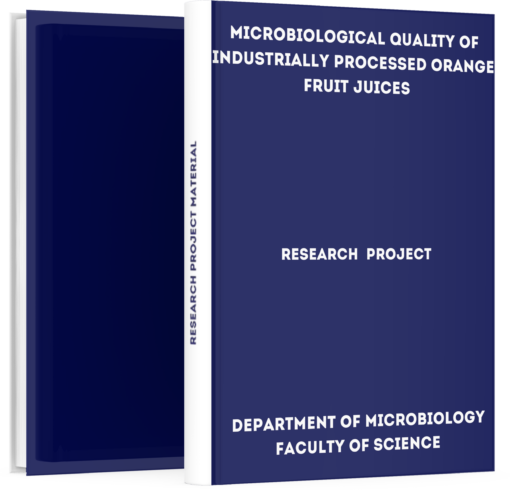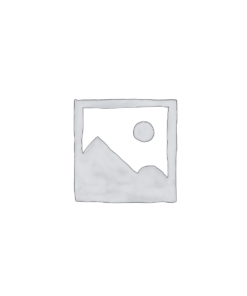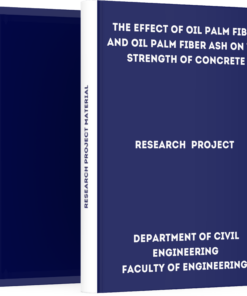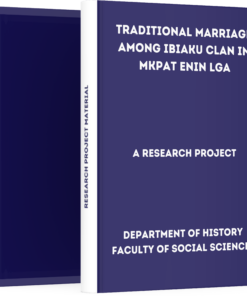Microbial Quality Of Solanum Macrocarpon Leaves Sold At Eke-Awka Market
₦3,000.00
If you are interested in getting this project material “Microbial Quality Of Solanum Macrocarpon Leaves Sold At Eke-Awka Market”, click on the DOWNLOAD BUTTON to make payment and the file will be delivered to your email immediately after confirmation.
Description
– Microbial Quality Of Solanum Macrocarpon Leaves Sold At Eke-Awka Market –
Download Microbial Quality Of Solanum Macrocarpon Leaves Sold At Eke-Awka Market. Students who are writing their projects can get this material to aid their research work.
Abstract
The study investigated microbial contamination of four samples of Solanum macrocarpon leaves commonly known Garden egg leaves (unwashed, washed and washed with different salt concentration).
The objective was to isolate and identify microorganisms present on the vegetable before washing (unwashed), after washing with sterile water and also in brine (the leaves wholly immersed in water and different salt concentration for 15 seconds),
the possible causes of contamination, as well as to investigate the presence of pathogen that may constitute a public health hazard from the consumption of the vegetable.
The vegetable samples were obtained from Eke.Awka Market from four different vendors under aseptic conditions (in sterile plastic bags to eliminate cross contamination) and transported to the laboratory of Applied Microbiology and Brewing, Nnamdi Azikiwe University, Awka within 30.40 mins of collection.
Nutrient agar and Sabouraud dextrose agar were used in the study as culture media, while pour plate techniques involving laying of sample in the poured media was employed.
The samples were qualitatively analyzed by microbiologically analysis which involved identification of the isolates using different biochemical analysis with the following results for bacteriological analysis:
Bacillus sp, Escherichia sp and Staphylococcus sp. for unwashed, Staphylococcus sp and Enterobacter sp for washed and washed vegetables with different salt concentration (2.5%, 5% and 7.5% NaCl) showed the presence of Pseudomonas sp, Bacillus sp, Micrococcus sp and Enterococcus sp.
The mold detected were Mucor sp, Penicillum sp, Rhizopus sp, Aspergillus sp and Fusarium sp. Yeast were also detected.
Fusarium sp were detected in washed samples with salt concentration of 5% and 7.5% because they are halotolerant but the growth can be much more inhibited at a higher salt concentration, while mucor sp, Penicillum sp and were detected in unwashed samples and yeast were detected in washed samples.
Introduction
1.1 Background of the Study
Food hygiene has been defined as meaning all the measures necessary for ensuring the safety, wholesomeness and soundness of the food at all stages from farm to table. The object of food hygiene practice consists of the production and serving of food as free as possible from contamination.
Vegetables provide the body with vitamins and minerals in addition to the basic carbohydrates and proteins. Vitamins and minerals are not stored for long in the human body and, hence, there is need for daily consumption.
In the past decade, outbreaks of human illness associated with the consumption of raw vegetables and fruits have increased. Changes in agronomic, harvesting, distribution, processing and consumption patterns and practices have undoubtedly contributed to this increase.
Pathogens such as Listeria monocytogenes, Clostridium botulinum and Bacillus cereus are naturally present in some soils and their presence on fresh produce is not rare.
Salmonella, Escherichia coli, Campylobacter jejuni, Vibrio cholerae, parasites and viruses are more likely to contaminate fresh produce through vehicles such as raw or improperly composted manure, irrigation water containing untreated sewage or contaminated wash water.
Contact with mammals, reptiles, fowl, insects, and unpasteurized products of animal origin offers another avenue through which pathogens can access produce.
Surfaces, including human hands, which come in contact with whole or cut produce represent potential points of contamination throughout the total system of growing, harvesting, packing, processing, shipping and preparing produce for consumption.
How to Download this Project Material
First, note that we are one of the best and most reliable online platforms because we don’t retain any of your personal information or data as regards making payments online.
PRICE: ₦3,500 ₦3,000 (Three Thousand Naira Only)
Make a bank deposit or mobile transfer of ₦2,000 only to the account given below;
Bank Name: UBA Account Number: 1022564031 Account Name: TMLT PRO SERVICES
After making the payment, CLICK HERE to send the following on WhatsApp;
- Depositor’s Name or Screenshot of Payment
- Name of the Past Question
- Active Email Address
or Call Us On +2348082284439 Once your details have been received and your payment confirmed by us, you will receive the past question in your email or WhatsApp within 5 Minutes.
Guarantee of Getting the Material
We understand that due to the high rate of fraud, many people are afraid of making purchases online but be rest assured that PastExamQuestions will deliver your material after payment.
Once your details have been received and your payment confirmed by us, you will receive the past question in your email or WhatsApp.
Give us Feedback
Have we been able to satisfy you? How well do you think the material will be helpful after having gone through it? Does the price worth the material?
Let’s hear from you! We recommend that our customers give feedback at the end of every transaction to enable us to serve better. You can do this by clicking the review button on this page.
Where is the review button? >> Just scroll up to where you see reviews




Reviews
There are no reviews yet.